

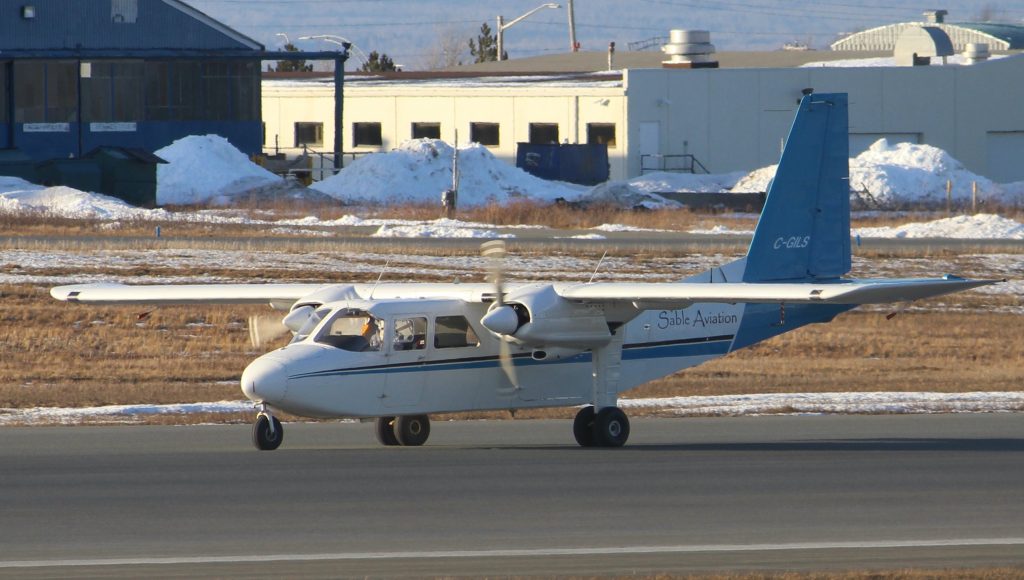
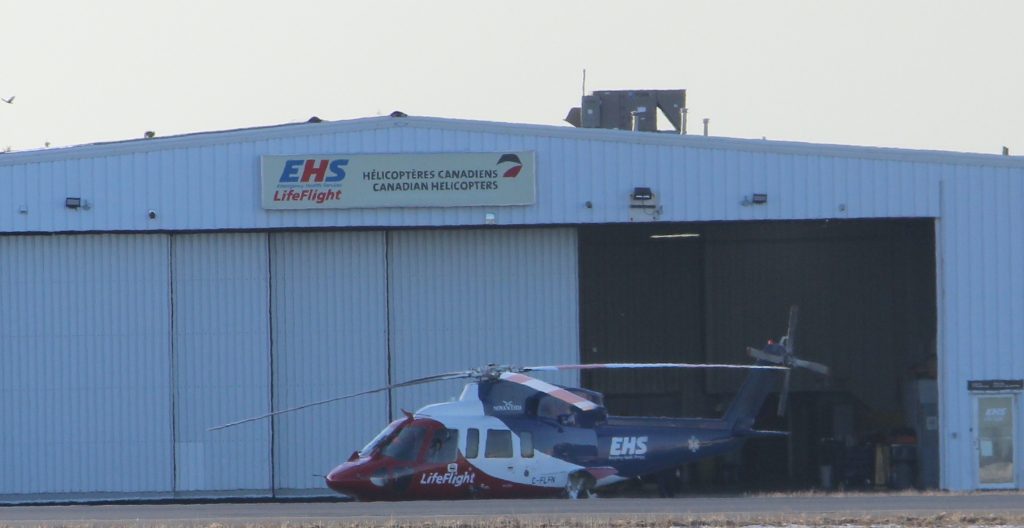

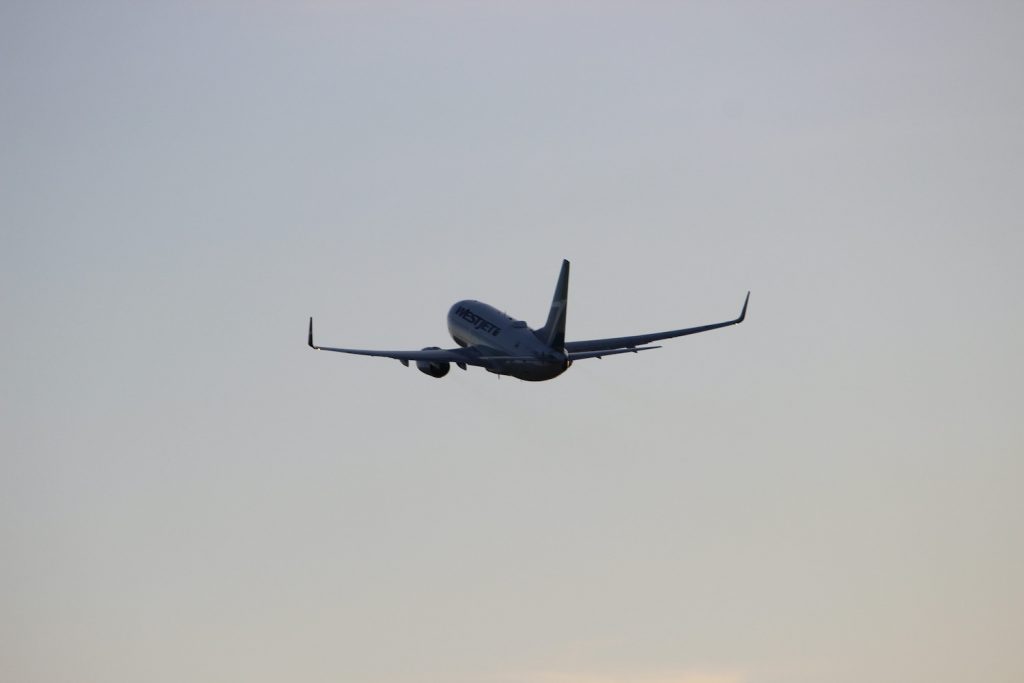







This post needed an update. the original version was spurred by a March 2021 announcement that the province would be placing an AED in every school in the province. I asked if we taught CPR in schools. – We Don’t.
I first learned CPR in Grade 8, back in 1994, in school (in Ottawa). We should add this to the school curriculum. its a life skill. Its also important if we want to improve outcomes for patients who suffer sudden cardiac arrest.

The latest information I can find shows that the survival rate for out of hospital cardiac arrest in Nova Scotia is around 6%. Put bluntly, if you are a victim of sudden cardiac arrest, you will probably not survive. Many jurisdictions however have survival rates closer to 70%.
The Key to that massive jump in survival rates is prompt intervention by bystanders.
Bystander CPR is Critical. If you see someone collapse, and call 911, it will take at least 5 minutes for help to arrive. The chances of survival decrease by 10% for every minute without CPR. This fall, EHS will begin to provide telephone CPR instruction. This is good, but you can also learn the skill in advance . The video below can teach you to do effective CPR in less then 2 minutes. (or go take a course)
The second key piece to improving survival rates is bystander defibrillation. Research tells us that the sooner Defibrillation can be applied the better, and should happen within 3-5 minutes. ideally the goal for defibrillation should be 2.5 minutes. In any event, defibrillation needs to occur before professional responder’s can be expected to arrive.
This means AEDs need to be readily available. The average person can walk 400m in about 4 minutes, meaning you need to be within 200m of an AED if your going to rely on it. I did a quick analysis to see what areas fall within 200m of a Public Access AED in Halifax.

The map above is based on data from the EHS AED registry. The analysis is imperfect, as it only assumes a 200m as the crow flys radius around each AED, and makes no allowances for vertical height, or obstructions on the ground. In short it overstates the actual AED Coverage area.
AED’s will tell you how to use them. you simply need to open the cover, or press the on Button. Below is 90 second video on AED use.
Research tells us that vertical living can also greatly effect you chances of survival. A 2016 study suggests that those suffering sudden cardiac arrest on the third floor or below, are twice as likely to survive as those living above the third floor. In an analysis by floor, survival was less then 1% above floor 16, and there were no survivors above the 25th floor.
If you have an AED, register it with EHS at savelivesns.ca. if your building doesn’t have an AED, you should get one, especially if it is over 3 stories.
You – probably have a few questions:
Q: Hands only CPR – is that it?
yes it is. Studies have shown that rapid CPR is essential to improving survive ability of cardiac events. get the blood flowing again as fast as you can.
Q: what about breaths?
not that important. there is still quite a bit of oxygen in the blood, but it needs to circulate. Plus, breaths are gross – they subject you to communicable diseases, and people having cpr done to them tend to throw up.
Q: Don’t I need Training?
Ideally, yes. training will give you practice, and have your technique evaluated by a Professional. In the case of a sudden cardiac arrest, nothing you do will make the situation worse for the patient. you can only help.
Q:What happens when responders arrive?
fire departments are trained to Health Care provider level CPR. They have tools to secure airways, and start providing breaths. Paramedics come with a collection of drugs and more advanced tools.

RMI Seafox and a barge were seen out in the basin servicing some of the Navy’s Mooring Buoys. These buoys are anchored to the seabed, and allow navy vessels to tie up via their bow Fair lead.

This particular trot Buoy is located just south of the DRDC Barge. Below is a diagram of the setup of such a buoy.
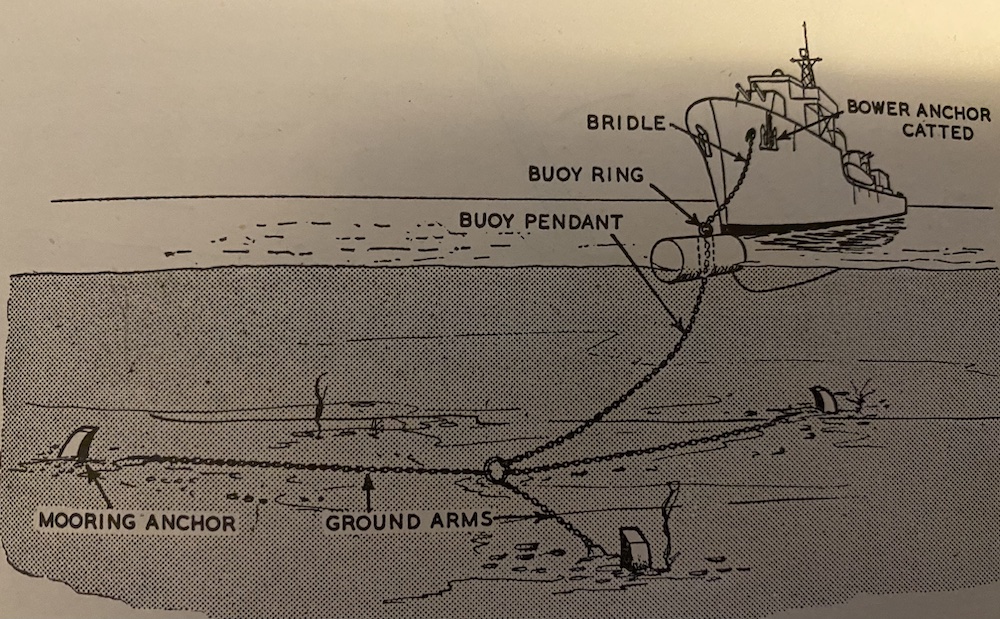

A collection of Air Canada Express craft laid up and out of work at YHZ. The Dash 8-300 on the right, looks like it could be put back into service at anytime. The smaller Dash 8-100 on the right (and larger below) is one of 25 of the type retired in May 2020, when model was retired from revenue service. Its openings have been taped up, and covers placed on the propellers to preserve the aircraft during its lengthy storage period.

Air Canada Express is operated by Jazz Aviation – Canada’s third largest airline, and Based out of Halifax.

A MasAir 767 made a brief stopover tonight for fuel. The flight was from Frankfurt to Mexico City.
MASAir is a Mexican Cargo airline, and operates out of Mexico City. The Companies fleet consists of 3 Boeing 767’s. It runs a regular scheduled service between LA, Miami, Mexico CIty and other South American destinations.

On March 2, The F/V Atlantic Destiny Caught fire, with 31 persons onboard. Facebook posts seemed to indicate that the engine blew up, which was the cause of the fire. The fire was extinguished by the crew, but the vessel was then found to be taking on water, and a Mayday issued at 20:10.
The RCAF deployed a Hercules aircraft, which parachuted a SarTech to the stricken vessel, and a CH-149 Cormorant Helicopter, Both based at 14 Wing Greenwood.
The Halifax Joint Rescue Co-ordination centre notified watchstanders at the USCG 1st District Command centre of the incident at 20:05. USCG Sector North East deployed a HC-144 Ocean Sentry Aircraft and two MH-60 JayHawk Helicopters to the scene from the USCG Air Station Cape Cod.
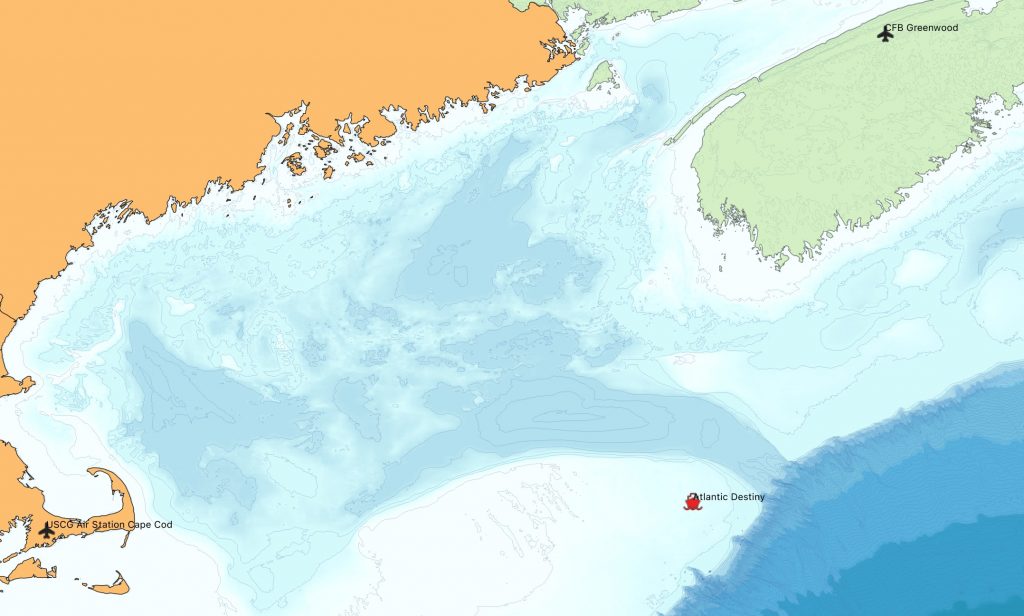
Winds were reported to be 55Knots, and 30′ seas at the time. The CCGS Cape Roger also responded, as did Clearwater fishing vessels Maude Adams and Cape LeHave.
Helicopters began removing crew around 11:30pm. 21 were removed by the two USCG Jayhawks, and 6 were removed by the CH149 Cormorant, which reported suffered a winch malfunction. The ships crew were flown to Yarmouth.
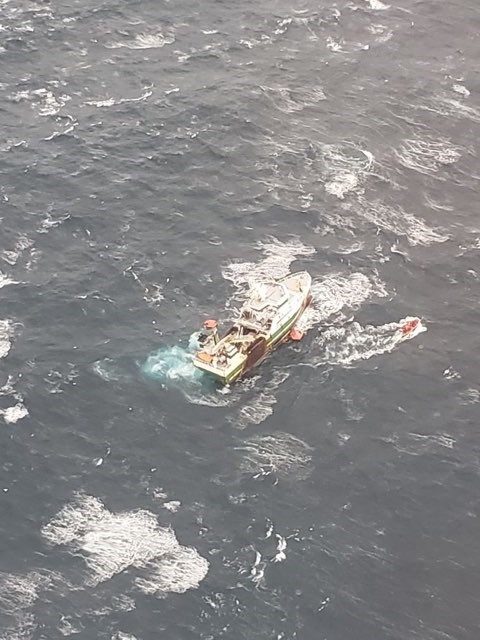

The CH149 also delivered a second SARTech, who along with 4 remaining crew worked to dewater the vessel. as of 00:30 the ships generator was operating, and the pumps running. By 8am, the decision was made to cease de-watering efforts, and the remaining 4 crew and 2 sar Techs were transferred to the CCGS Cape Roger. The F/V Atlantic Destiny sank at 10:36am.
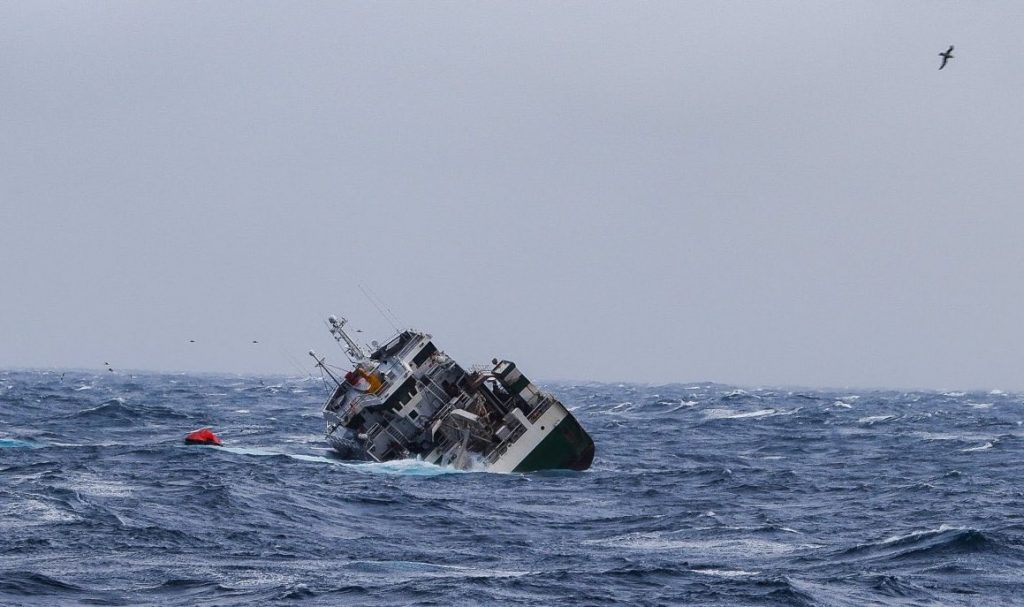

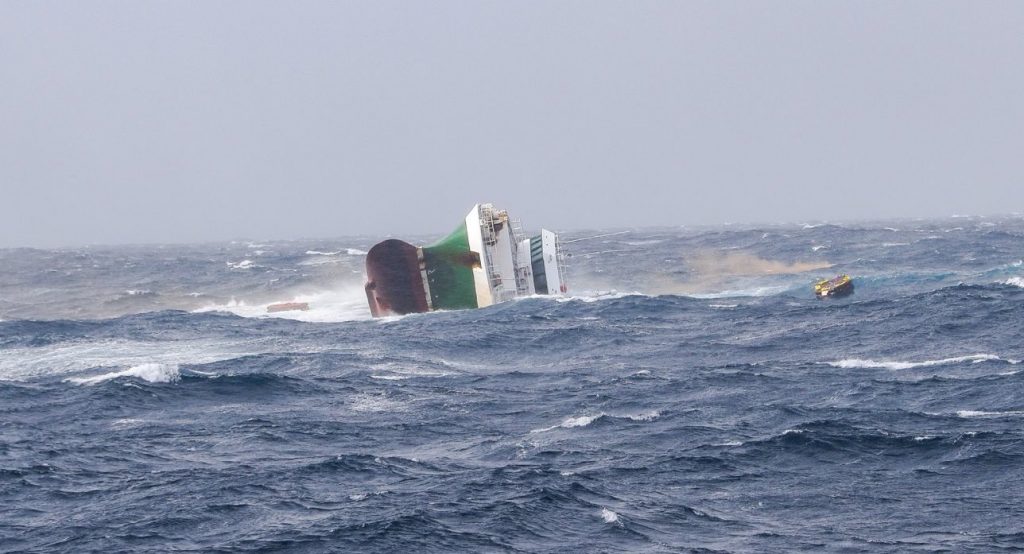
The F/V Atlantic Destiny was built in Denmark in 2002, and is a scallop factory freezer vessel, owned by Ocean Choice International of Newfoundland. It sails out of Riverport N.S, and is staffed by two 30 person crews who rotate 3 week stints.
There will be much speculation into what happened. The Vessel was the subject of a TSB investigation after a March 2017 incident that led to main engine failure. The report indicates that the ship had a history of engine shutdowns.
This post is an updated version of the live twitter thread i have been maintaining about the incident.
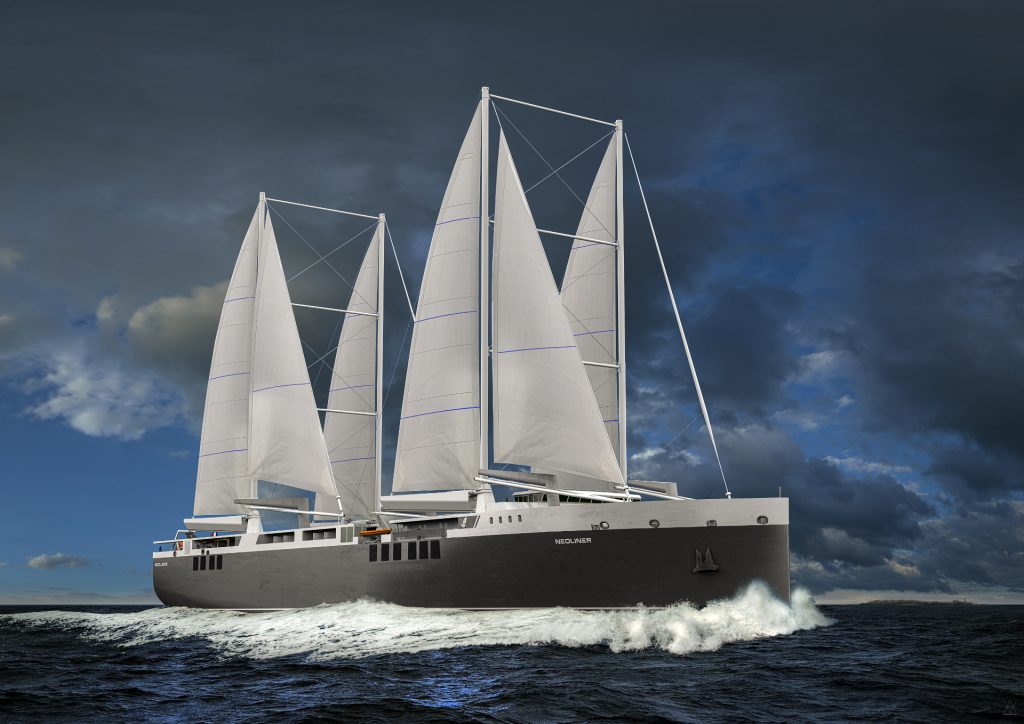
This week in the Herald I talk about NeoLine, the French firm that is proposing a new transatlantic service by sail powered RO-RO vessel. The Firm has a shipping commitment from Michelin, which would see this service call in Halifax starting in 2023.
Not to be out done, Wallenius Wilhelmsen plans a sail powered PCTC in 2025. The Orcelle Wind will carry 7000 cars at 11 knots under sail.
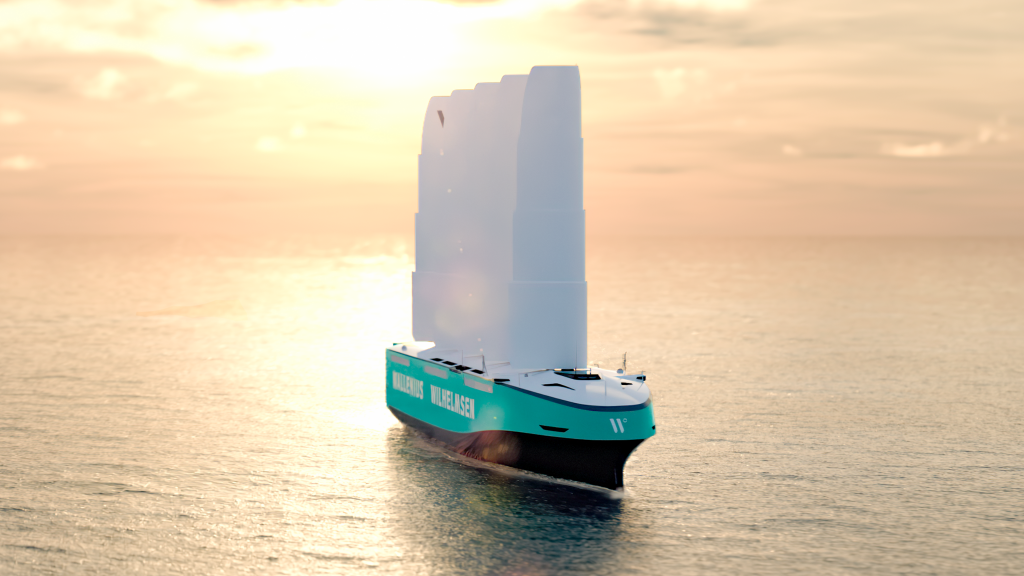
Cargo under sail happened in Halifax in 2019 in a very traditional manner with the arrival of the Cargo Schooner Avontuur with a load of coffee bound for Just Us.